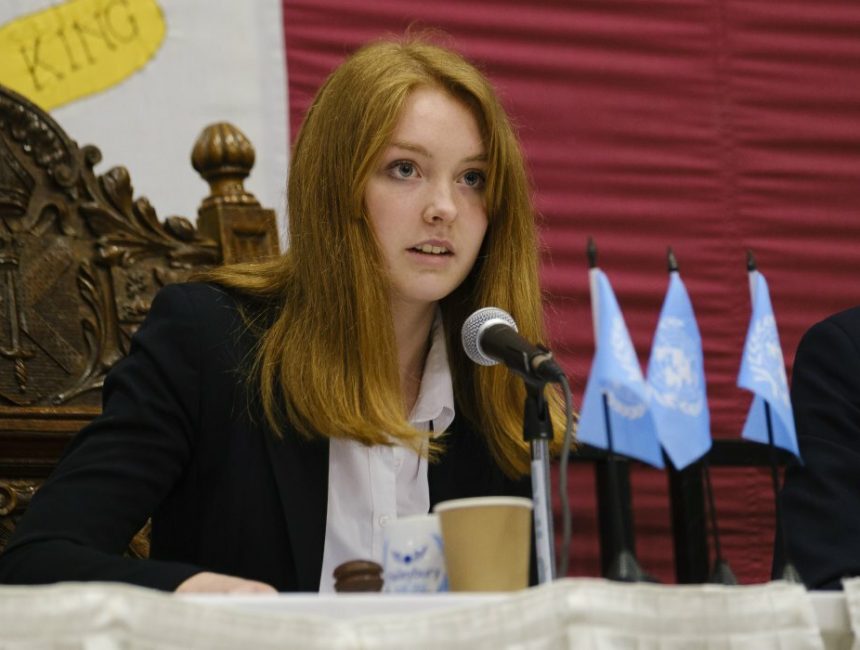As part of its charitable objectives, The Haileybury Society regularly provides Travel Grants to OHs seeking to enhance elements of their study or to enhance their educational or cultural development. Here, Ellie Owen (LS & H 13) reports on her trip to Berlin in support of her A-Levels.
Over the summer holidays, the Haileybury Society gave me the opportunity to travel to Berlin, via a generous travel grant. In my A-Level History course I study German history from 1918-89, so visiting Berlin was an amazing experience which made the history books I had been reading truly come alive.
DAY 1: Arrival in Berlin
After arriving early in the morning, we walked around the Mitte district of Berlin, we were able to see a number of famous sights including the Reichstag building, Brandenburg Gate, the Memorial to the Murdered Jews of Europe and sections of the Berlin Wall.
Seeing the Reichstag building was particularly poignant because of its historical significance – on February 27th 1933, less than a month after Hitler took power, a Dutch Communist, Marinus van der Lubbe allegedly set fire to the Reichstag building. Although a German High Court decreed that he had been working alone, Hitler used this incident to justify the suspension of civil liberties and persecution of his political opponents in the name of a national emergency.
The Brandenburg Gate was finished in 1791, but over the course of the Cold War, it came to symbolise the divided city of Berlin as it was a major border crossing after the construction of the Berlin wall on 13th August 1961.
Holocaust
However, the hardest part of the day was seeing the Holocaust Memorial, which was very difficult to stomach. Walking through to the middle of the memorial, I was overwhelmed by the feeling of being consumed by ordered rows of grey blocks resembling tombstones on uneven ground. In my interpretation (the memorial has been touted as being very open to interpretation), this was symbolic of the systematic, ordered killing of the European Jews and the uncertainty those same Jews would have felt as they were being persecuted, discriminated against, ostracised, ghettoised and killed by a virulently anti-Semitic regime.
Although the memorial was undoubtedly sombre it surprised me that many people were being relatively disrespectful: doing yoga poses, climbing and taking selfies etc. on the blocks. For me it was just a time for reflection on the horrors which were inflicted on all those victims and appreciate the importance of tolerance in order to avoid such atrocities in the future.
Battle of Berlin
We then rode the bus to the Neue See pizza garden, which was a welcome respite because we’d been up since 5:30 that morning! Nearby was the victory column which was incredibly iconic because the Polish flag was hoisted there at the end of the Battle of Berlin (2nd May 1945) but also provided awe-inspiring views of Berlin, after a 298-step trek to the top which was definitely worth it.
We also saw the Topography of Terror, which was of particular interest to me as it provides a lot of information on the topic of the A-Level History coursework. Finally, we went to the Checkpoint Charlie museum which was one of the most unusual museums I have ever seen. It was filled wall to wall with a collection of successful escape stories from East Germany, as well as related photos and apparatus (which included a Volkswagen beetle with a secret compartment in the hood).
However, there was no coherent thread or anything like the organisation of a conventional museum – you just have to stand and absorb what catches your eye. For example, it was horrible to learn about the struggle of a mother to find her 3-year old child who went missing in East Germany, even after the collapse of the Soviet Union in 1991.
But my favourite part of Checkpoint Charlie was buying a piece of the Berlin Wall, which now proudly sits on my bedside table as a reminder of a great trip. That evening, we sampled the local delicacy – currywurst, which consists of traditional German pork sausages and curry ketchup. It was definitely an interesting meal, if not totally delicious.
DAY 2: A day for Museums
The day began with a stroll along the River Spree where we enjoyed seeing two iconic parts of the Berlin skyline: the Berlin Cathedral and the TV tower. We then caught a bus to the East Side Gallery which involved some amazing artwork and a museum including even more information on the construction and working of the wall.
While in this area we also had a chance to see the Oberbaum bridge, which connects two Berlin districts (Friedrichshain and Kreuzberg) previously divided by the wall and is therefore a symbol of Berlin’s unity.
Then we went to the Pergamon Museum, where we were able to see the Market Gate of Miletus, which was particularly inspiring because of its link to my Latin A-Level course; and the Ishtar Gate and Processional Way of Babylon which fascinated me because it was so new and different to anything I had ever seen or studied before.
German history
Later we saw two more museums: first, the Deutsches Historisches Museum, which covered German history from the turn of the millennium and was linked to James Hawes’ ‘The Shortest History of Germany’ which I’d read a few months earlier. This encapsulated the way in which going to Germany allowed the books I’d read to become more real, as I was surrounded by the documents, objects and artworks which influenced or portrayed this history. It was a truly gratifying experience to feel surrounded by that history.
That only continued when we went to the Jewish Museum which was interestingly laid out because there were different axes, whose overall shape was reminiscent of a broken Star of David. The most moving parts of the museum were an art installation and the Holocaust tower. Shalakhet (fallen leaves) was in the memory void, where over 10,000 faces with open mouths cut from heavy iron circles covered the ground. There you could feel the void left by the Holocaust – the potential of over 6 million people who were torn from life before their time.
The Holocaust tower was a dark room on the edge of the building with 24-metre high walls and only a small slit at the top which provided the only light in the room, and through which you could hear the noise of the street above. I interpreted this as a representation of the ghettoization that the Jewish community underwent at that time, because they were apart from the rest of society and yet close enough to hear its sounds and hope for a normal life.
DAY 3: A day for reflection
This was the last day before we left, and we spent it in Sachsenhausen concentration camp, which is situated in the Oranienburg district, just north of Berlin city centre.
Suburban concentration camp
We took a 45-minute train ride and then walked for around 20 minutes to reach the camp, which was one of my lasting impressions of the day. We were following signs to Sachsenhausen but we were walking through a beautiful suburban area, so we thought we must have much longer to go than the signs had indicated. But when we turned right onto a street like all the others we could see, at the end of the road, the front of the camp.
It disconcerted me that modern-day Germans could deal with the uncomfortable and morally dubious proximity to such a terrible reminder of their country’s past. It worsened when we saw evidence inside of complaints from Oranienburg residents about the smell from the incinerator in the camp and the fact that the SS used the U-Bahn (Berlin’s public transport system) to bring Jews, political prisoners and other asocials to the camp.
I was left with the unsettling realisation that people must have known about these camps and, to varying degrees, what was going on inside of them, which has massively altered the lens through which I view my A-Level History coursework, which looks at the factors which influenced German consent to the Nazi regime.
Police under the Nazis
One of the most interesting signs I saw in the camp was one which explained that the Brandenburg University of Police Sciences has been situated adjacent to the Sachsenhausen Concentration Camp Memorial since 2006. Furthermore, in the university they teach about the crimes committed by the police under the Nazis and the fundamental principles of the Basic Law (West German, then German constitution written in 1949) that human dignity is inviolable, and it is the duty of state authorities to respect and protect it.
Interestingly, I also learnt that the site was later used as a Soviet special camp in which political prisoners were held; from 1945-50, over 12,000 people had died from malnutrition or disease. It was a painful reminder of the trauma which Germany went through over the course of the 20th century and a sobering way to end the trip. Nonetheless it was an invaluable educational experience and I can now truly appreciate the human cost of those events, whose proportions are sometimes learnt by the requirement to memorise facts and statistics alone.
Overall, my visit to Berlin was absolutely brilliant and I would love to thank the Haileybury Society and the Wilfrid Blunt trust for funding this amazing opportunity for me. It has added an extra dimension to my studies and it is an experience I will treasure for a long time.
Ellie Owen (LS & Ha 13)
Photograph: the photograph of Ellie shows her chairing the 2018 Haileybury MUN as Joint Secretary General and appears courtesy of Haileybury’s own website; at time of going to press we were awaiting Ellie’s photographs of her Berlin travels and will upload them when they become available.
Find out more about travel grants
The Haileybury Society supports the educational and cultural enrichment of young OHs through a limited number of travel grants.
Other Travel Grant awards
More from The Haileybury Society
- Never In Our Comfort Zone – Challenge Complete
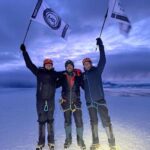
- Weekly Watercolour Classes with John Hill (K 63)
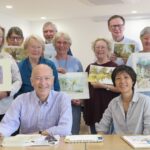
- Oscar Lock (BF 13)
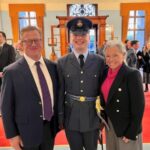
- Haileybury Connections In Uganda
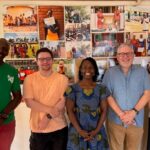
- Now Published – The Haileybury Society Annual Report 2025
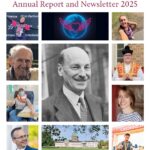
- Haileybury Rackets – A Proud Sporting Heritage
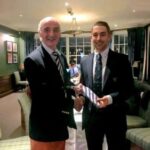
Unless otherwise stated, all content and images on this website and blog © The Haileybury Society, 2024, all rights reserved
Search stories by date
Unless otherwise stated, all content and images on this website and blog © The Haileybury Society, 2024, all rights reserved
